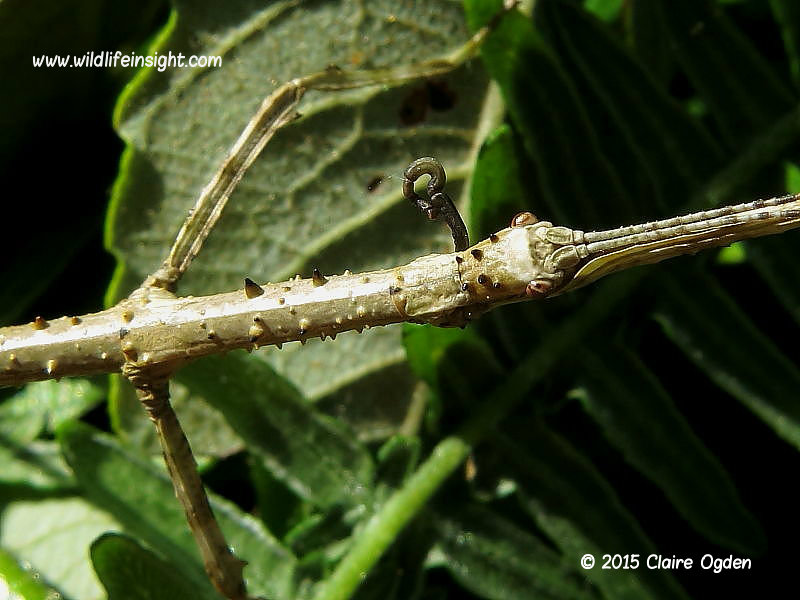This Unarmed Stick-insect,Acanthoxyla inermis, found on the 12th October is only the 2nd in the garden this year.
In past years they’ve been found in all parts of the garden and even turned up in first floor bedrooms as winter approaches.
Earlier in the year during our travels around Cornwall photographing wildlife we did come across another on the Helford Estuary and a Prickly Stick-insect (Acanthoxyla geisovii) at Kennack Sands on the Lizard (photo below).
We understand this Prickly Stick-insect is the first sighting of this species in this part of the Lizard managed by Natural England. It was found on sallow while standing on the South West Coast Path close to Kennack’s sandy beach – so maybe this is the first record of a Prickly Stick-insect on the South West Coast Path in Cornwall outside the well established St Mawes population?
According to Malcolm Lee, the recognised authority on the distribution of stick-insects in Cornwall, several garden centres now have populations of both species in Cornwall. From these retail outlets the eggs and even fully grown insects are easily transported on plants into gardens. And, being parthenogenetic, the introduction of a single insect can start a resident population.
 The good news is that unlike many introduced species it appears these relative newcomers to the British Isles haven’t had a detrimental impact on other native insects or plants.
The good news is that unlike many introduced species it appears these relative newcomers to the British Isles haven’t had a detrimental impact on other native insects or plants.
The original populations of Cornish stick-insects are thought to have been transported as eggs in ferns and other plants into the county from southern hemisphere countries such as New Zealand.
In mild south west Cornwall there are many gardens where they may have originally been introduced via exotic plant collections before spreading to nearby gardens.
Certainly many ordinary gardens in Falmouth such as ours now have these fascinating insects – although we still find spotting them extraordinarily difficult!
Related pages: Bug posts | British bugs gallery